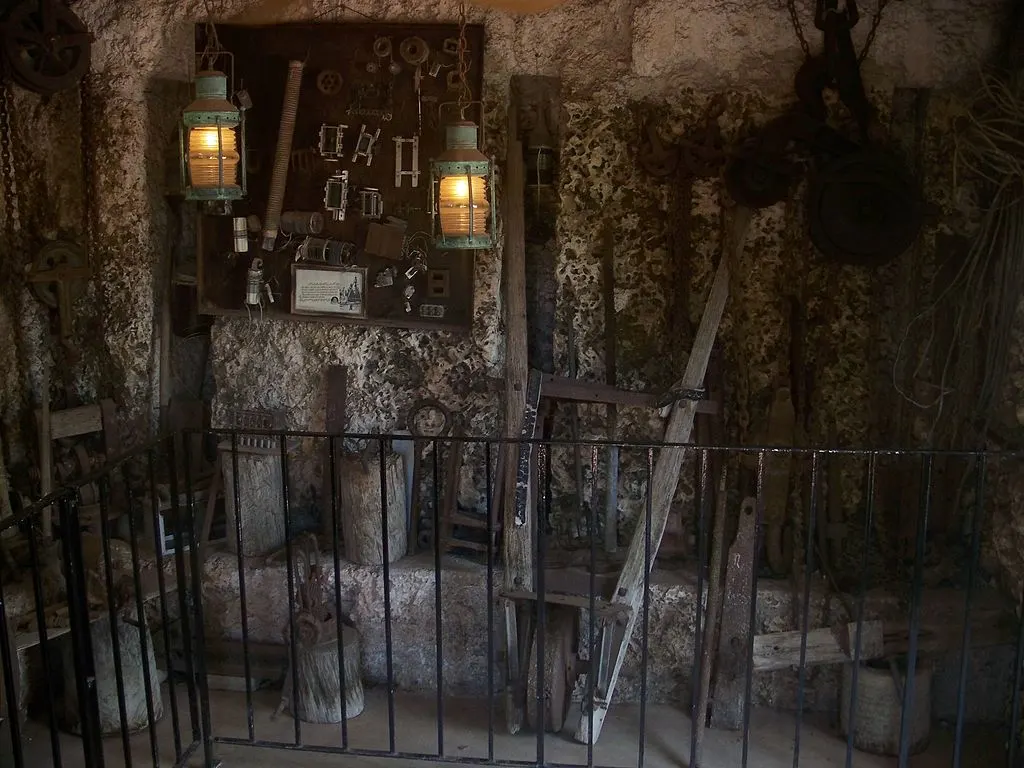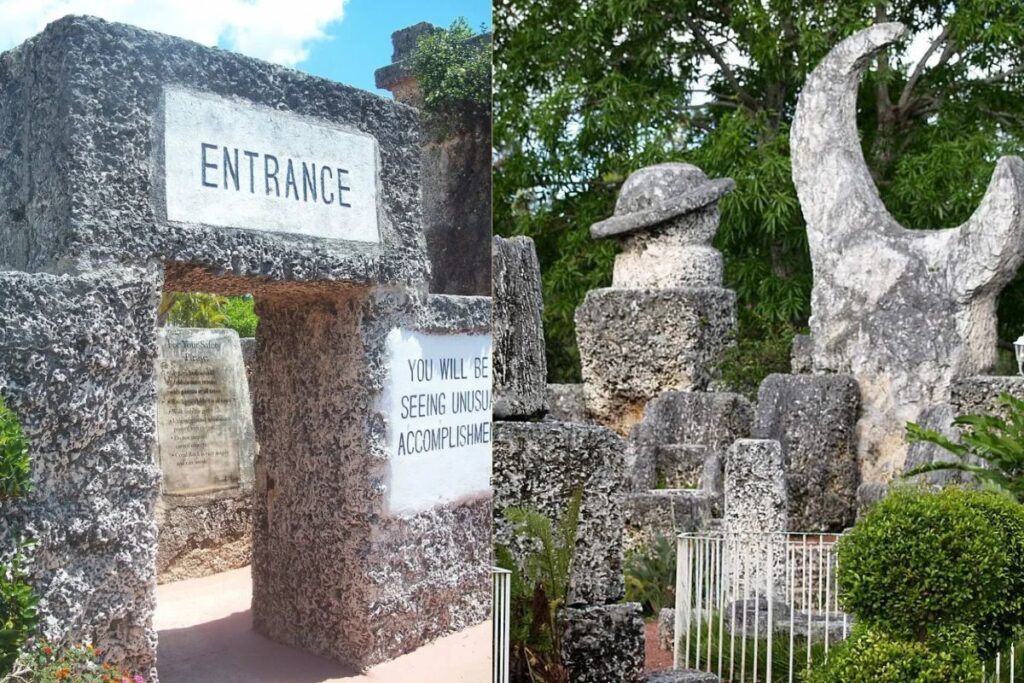
In Homestead, Florida, the heat presses down, but what draws attention is a stone fortress that seems almost impossible. Edward Leedskalnin built it by himself, stacking massive coral blocks without mortar, each one as heavy as a car. Inside, he left unusual works: a rocking chair carved from solid stone, a sundial that tracks the seasons, and a crescent moon sculpture placed so it shines when the sun hits it.
Leedskalnin had no training in architecture and no help from machines or crews. Still, he cut, lifted, and set these enormous stones with perfect balance. Visitors continue to walk through the site in wonder, running their hands along the rock and trying to understand how a single man could have done it.
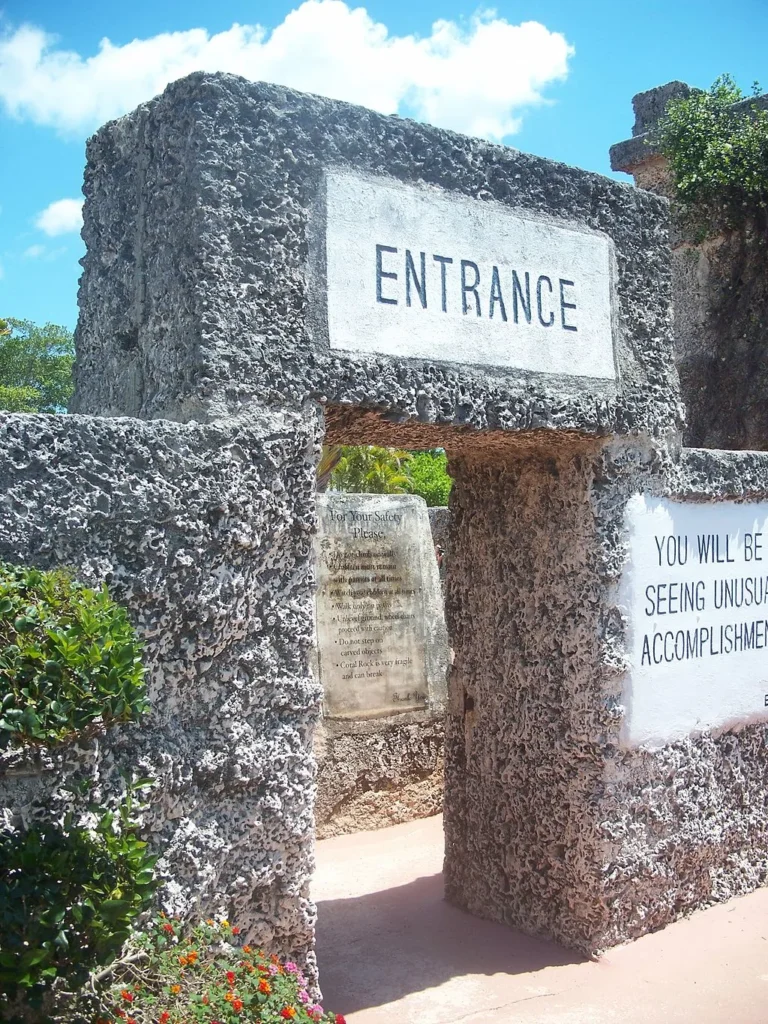
The Mystery Begins with a Heartbreak
Edward Leedskalnin, a Latvian immigrant, arrived in America after a sudden turn of fate at home. In Latvia, he had been engaged to a girl he called his “Sweet Sixteen,” ten years younger than him. The wedding was planned, the future seemed certain, and then, only days before the ceremony, she ended the engagement.
The heartbreak stayed with him, but it also drove him forward. Carrying that loss, he left Latvia and crossed the Atlantic, eventually settling in Florida. There, in the quiet flatlands, he began a new life that would take on an extraordinary shape.
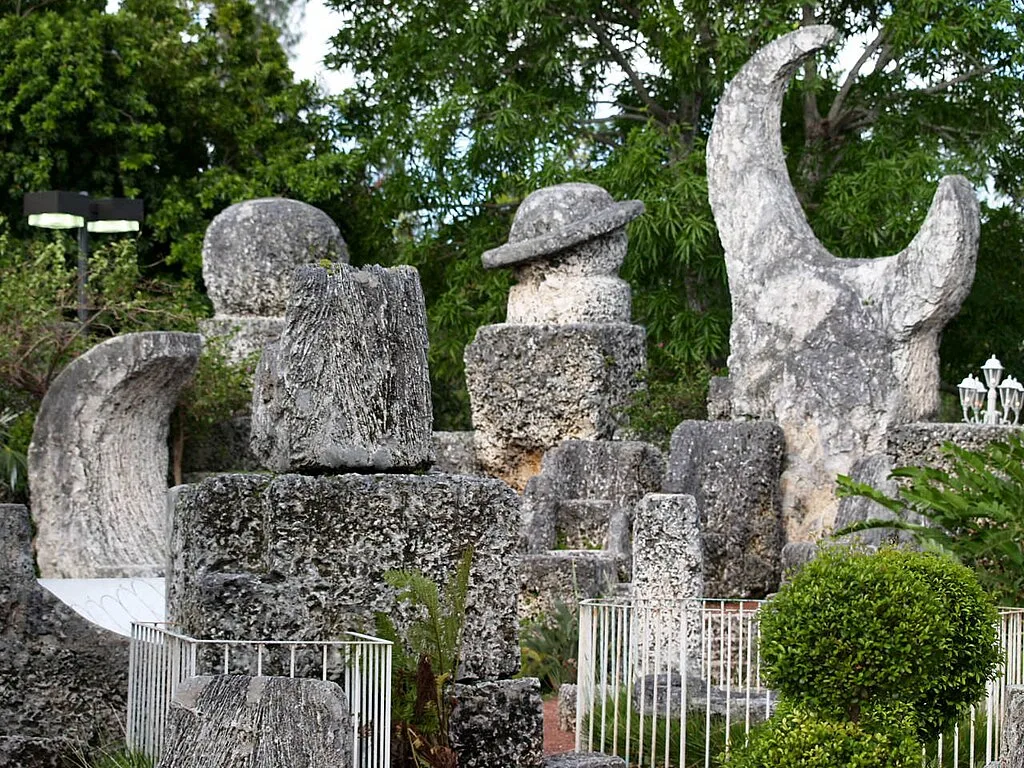
Edward first settled in Florida City, where he began working alone on a project that caught quiet attention. Day after day, he shaped coral rock into enormous blocks, hauling each one with patience and precision. Neighbors sometimes spotted him under the hot sun, his thin figure moving the stone with slow, steady effort.
As the years passed, he built tall walls that hid much of his progress. Then, in the 1930s, he arranged to move the entire creation ten miles north to Homestead. The relocation exposed the true scale of his work, and people came to admire not only the beauty of the stone but also the mystery of how it had been made.
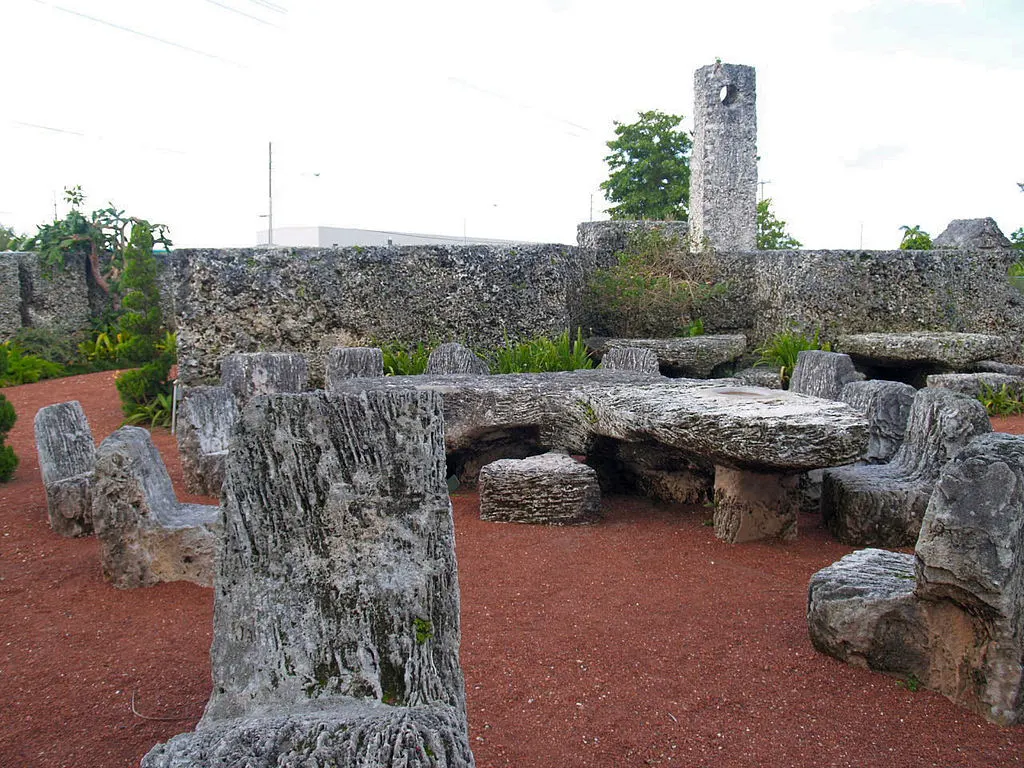
A Fortress Built from the Earth Itself
Ed worked with oolitic limestone, a coral-rich stone found just beneath Florida’s surface. He quarried it by hand, using tools he built himself from scrap metal and old car parts.
From the earth he drew out blocks that weighed as much as thirty tons. With surprising accuracy, he lifted them upright and fitted them so closely together that not even a thin gap showed between them. Some stood nearly twenty-five feet high, forming the walls and structures that remain standing to this day.
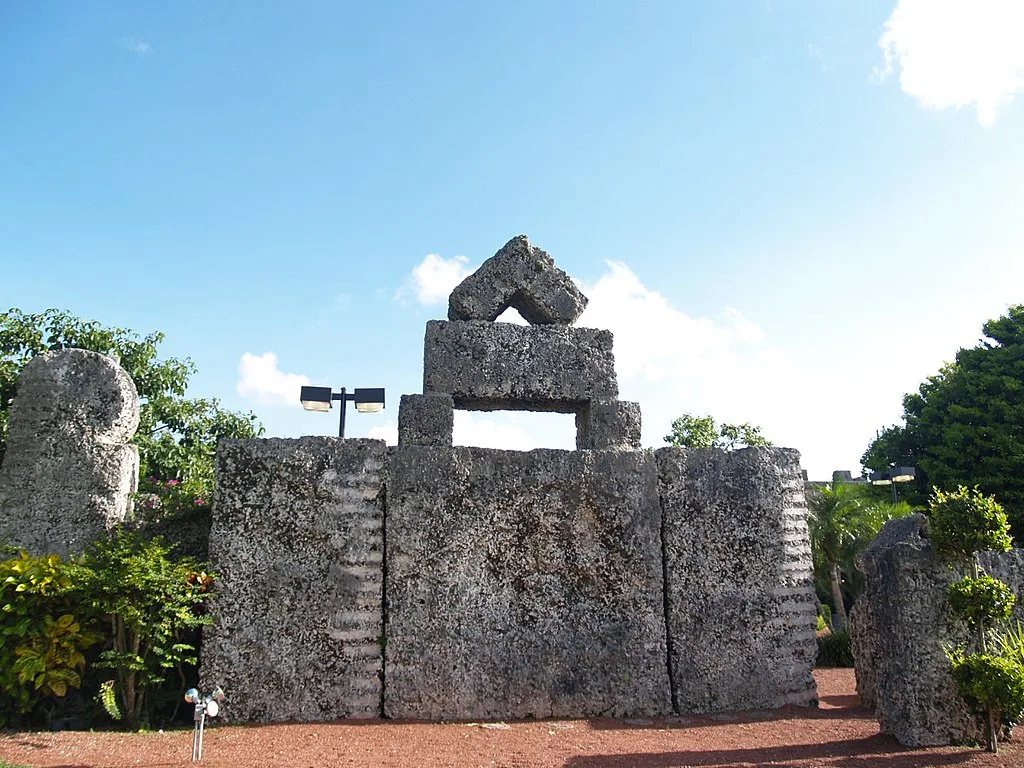
Inside the walls, Leedskalnin’s imagination shows in both playful details and technical precision. He carved a Polaris telescope from stone that points directly to the North Star. A sundial rests nearby, its stone pointer casting a shadow across carefully marked numbers, keeping time with surprising accuracy. Even the tables and chairs carry a touch of wonder. They are shaped from coral rock, with some chairs built to rock gently when touched.
The gate is perhaps the most famous piece. Carved from a single nine-ton block of coral, it was set on a central shaft so finely balanced that it once moved with a simple push of the hand. Engineers who later studied it were astonished, calling it one of the most exact demonstrations of balance and alignment they had ever seen.
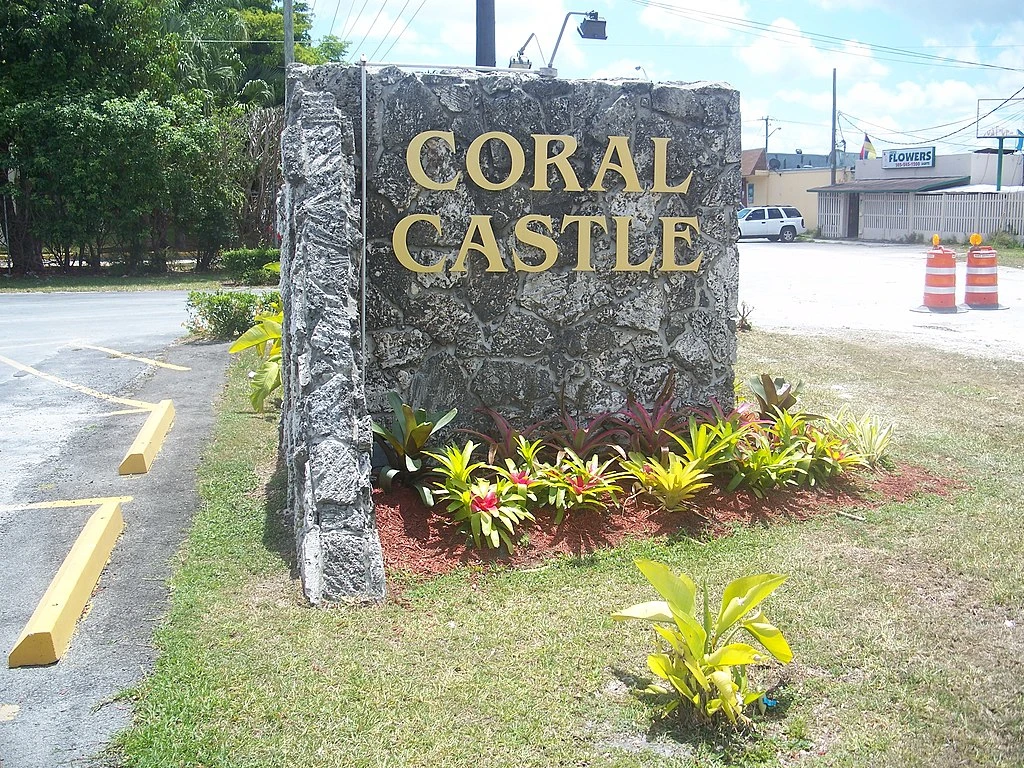
Night Work and Silent Labor
Ed chose to work when the sun went down, moving under the dim glow of lanterns. By the time morning came, new blocks of coral stood in place, so neatly set that neighbors joked they must have been lowered by some invisible power. People could not understand how such heavy stones had shifted silently in the night.
Onlookers sometimes tried to catch him in the act, but Ed would stop and wait until they left before lifting another piece. When pressed for answers, he never explained the methods. Instead, he gave a single reply. He said he had uncovered the secrets of the pyramids, a remark that only deepened the mystery around his work.
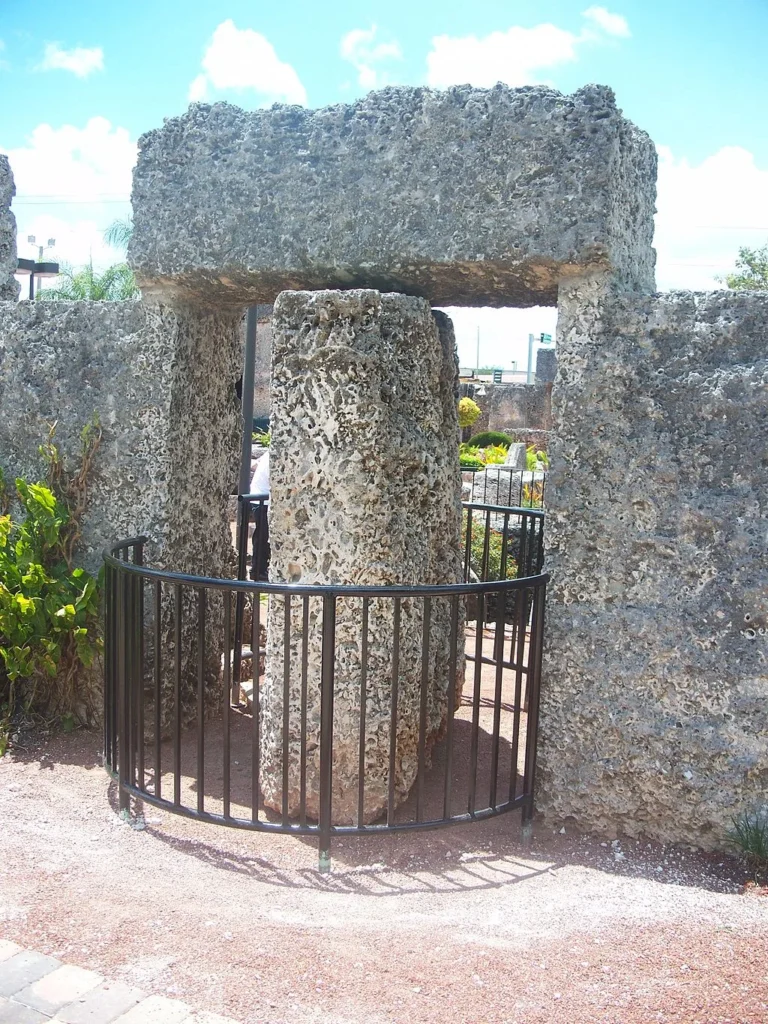
Ed worked with tools that were simple but clever. Old photographs show him using a block and tackle, chains, pulleys, and wooden tripods made from telephone poles. Nothing was store-bought. Every piece of equipment came from scrap or his own hand, which meant he controlled every step of the building process.
Engineers who later studied Coral Castle believe he relied on patience, leverage, and counterweights to move the stones. The way he set them in place shows a sharp understanding of balance and force. Yet no one has been able to trace the exact steps he followed. That mystery still lingers, and it is part of what makes the site as fascinating as the finished walls themselves.
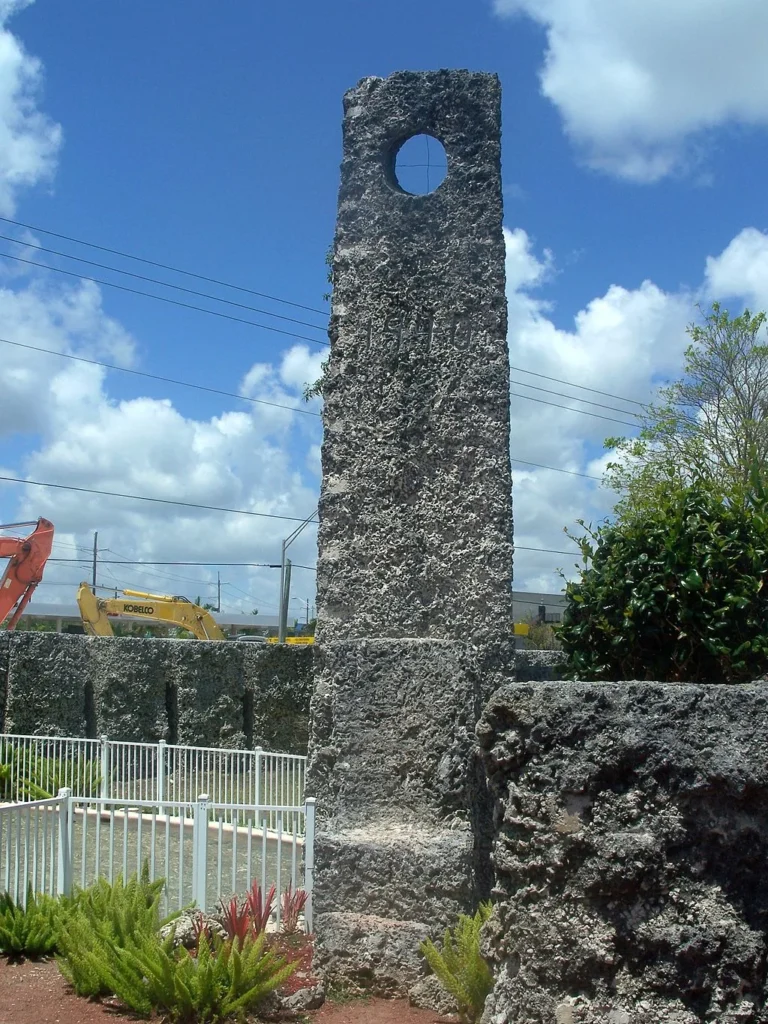
A Home and a Monument
Although Edward Leedskalnin called his creation Coral Castle, in private he often referred to it as Rock Gate. Behind the towering stone walls, he lived simply in a small two-story tower. His bed was plain wood, and beside it he kept a modest workshop where he shaped the tools he used for his work.
Outside his living quarters, the grounds opened into what felt like a sculpture garden under the sky. The arrangement carried the touch of an artist as much as a builder. Each form he carved fit into a larger vision, joining function with beauty in a way that gave the place a quiet sense of purpose.
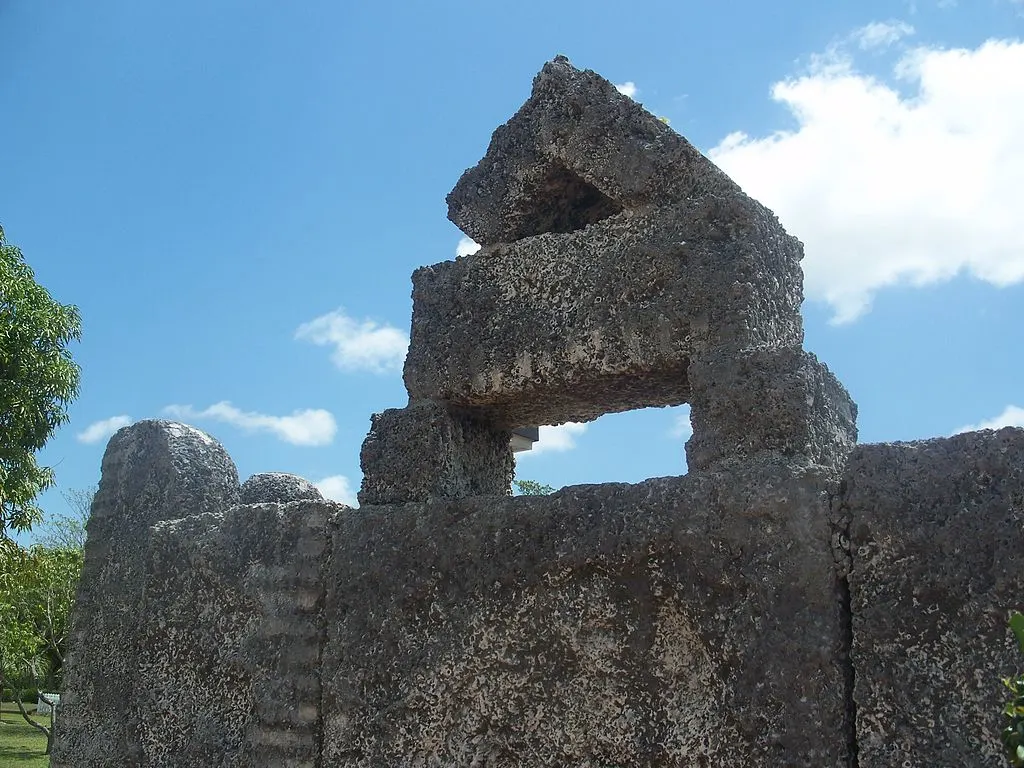
Many believe Leedskalnin built the castle as a tribute to the young woman he once hoped to marry, a figure he called his “Sweet Sixteen.” Her absence, some say, planted the seed for a monument where stone could hold the words he could never speak.
Others read the work differently. To them, the castle reflects a man who poured himself into a purpose strong enough to carry him through loss. They see it in the careful placement of the stones, in the way the structures line with the stars, and in a philosophy about time, the heavens, and the place of human beings in that endless order.
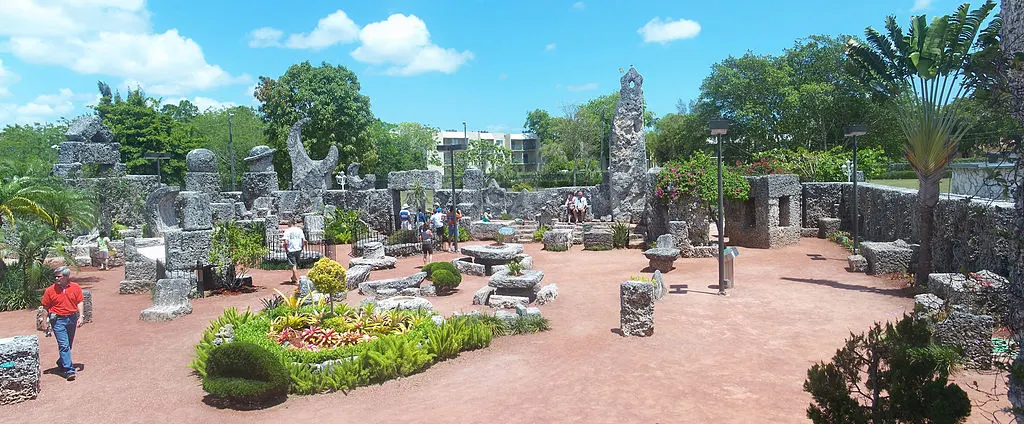
A Destination of Curiosity
By the 1940s, Ed began welcoming visitors to Coral Castle for a ten-cent entry fee. He guided them himself, pointing out the stone chairs, tables, and sculptures with quiet pride. His explanations were playful, offering just enough detail to spark curiosity while keeping the deeper methods hidden. Many walked away feeling the place held its secrets because Ed wanted it that way.
When Ed died in 1951, the property passed through several owners, yet the gates never closed. Over the years, Coral Castle became both a roadside attraction and a source of fascination for those drawn to its mystery. Scientists studied the construction, historians preserved the story, and writers found inspiration in the unusual blend of skill and secrecy that defined Ed’s work.
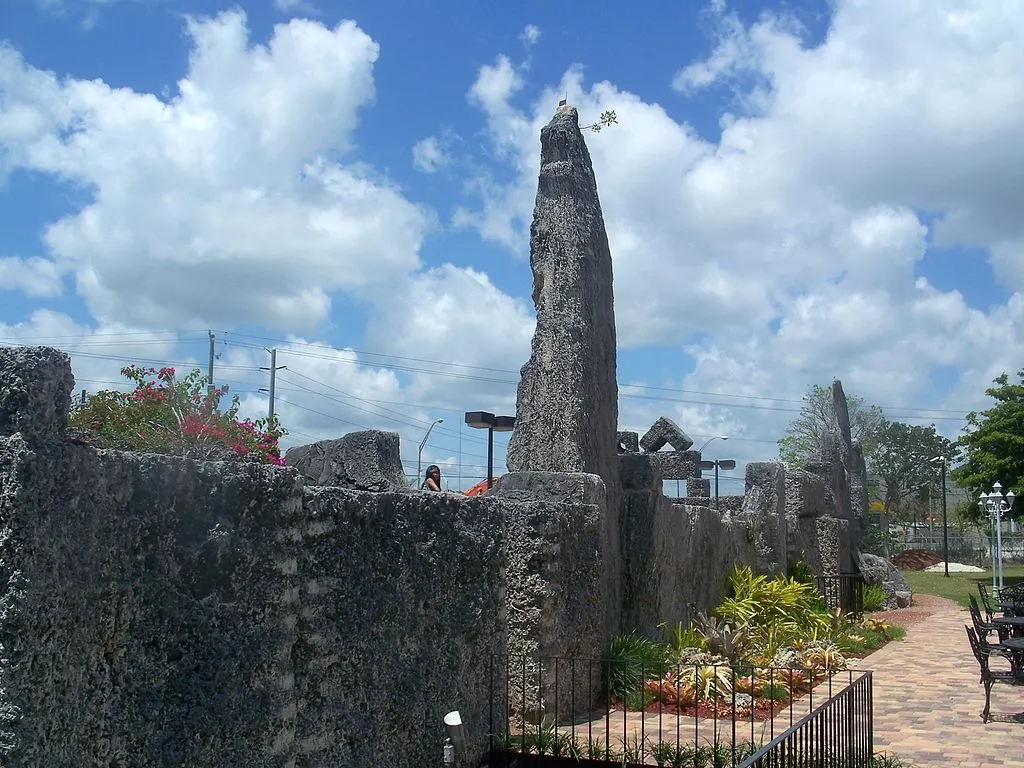
Some visitors became convinced that Ed had tapped into a hidden force of magnetism. Others suggested he had learned to use the earth’s natural energy to move stone in ways no one else could.
Most experts, though, saw his achievement as the product of tireless patience and a sharp understanding of weight and balance. They imagined him testing, adjusting, and setting each stone with precision until it rested exactly as he wanted. Whatever the truth, his methods remain locked inside the walls he left behind.
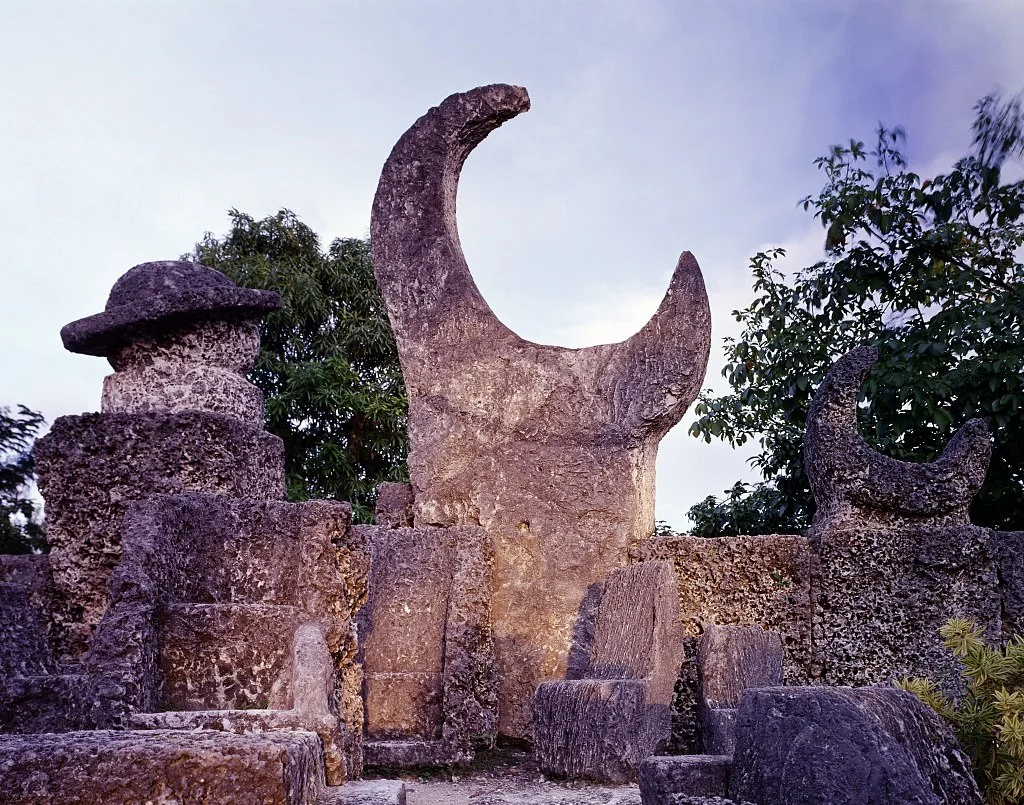
The Work That Endures
Today, Coral Castle welcomes visitors as both a marvel and a mystery. The heart-shaped table, the rocking chairs, the sundial, the telescope, and the enormous gate remain just as Edward placed them. The coral blocks have stood through Florida’s heat and storms for decades, yet their balance and precision remain unchanged.
What keeps the site alive is not only the craftsmanship but also the unanswered questions. Everyone can see the artistry in the stonework, yet no one can say for certain how Ed achieved it. That lingering curiosity continues to draw people from across the world, eager to see for themselves what one man left behind.
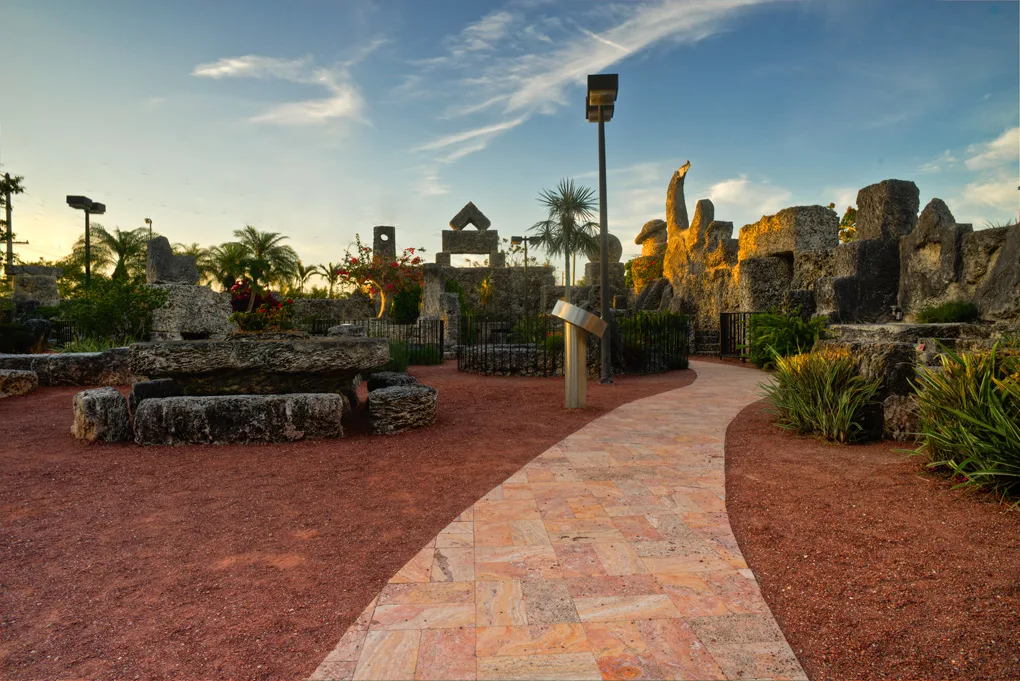
The scale of the work is as striking as its detail. Every block seems positioned with careful intention, each one fitted as though measured to the smallest degree. Whether Leedskalnin possessed rare natural skill or simply devoted his life to mastering his tools, the result is a lasting monument to human persistence.
The entire site carries the same quiet power as the ancient monuments of the world. It speaks not through words but through stone, through the shadows cast on the walls and the weight of each piece fitted in place. Coral Castle inspires the same instinctive awe as any creation built to stand long after its maker is gone.
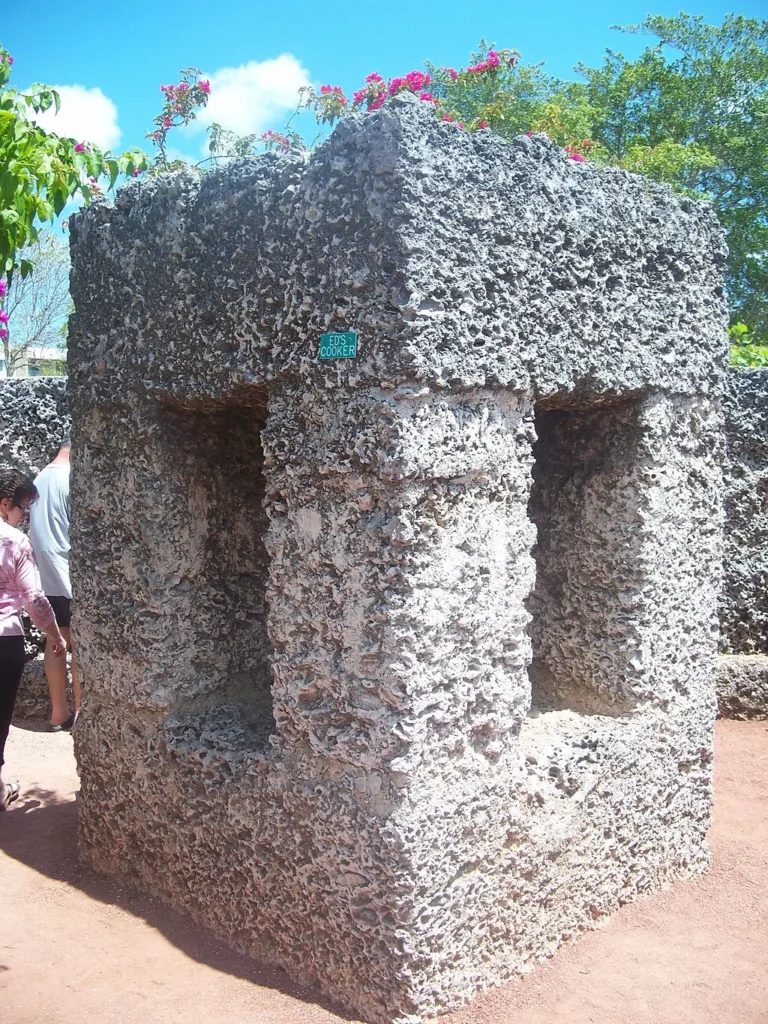
A Legacy Carved in Stone
Standing inside Coral Castle, the scale of the work immediately points back to its maker. Every surface and angle bears the mark of Edward Leedskalnin’s hands. He worked in silence, without helpers, and left a monument that has endured for generations.
His story is embedded in the stone. It reflects the persistence of a man who transformed solitude into creation, guarded his methods closely, and left behind a structure that speaks for him long after his voice was gone.
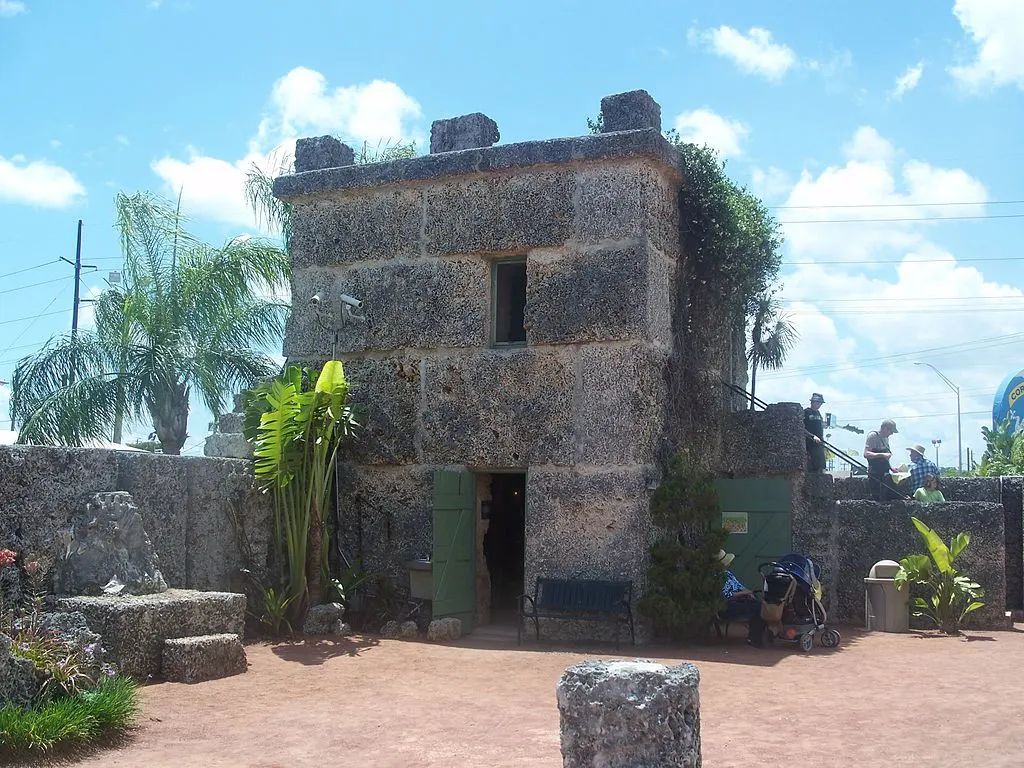
Visitors often walk away with the sense that they have seen something rare. The size, detail, and balance of the site raise questions that linger: how did he manage it, and what compelled him to spend so many years shaping it?
At a time when most building was fast, loud, and carried out by teams of workers, Coral Castle emerged through slow, deliberate effort. Stone by stone, Leedskalnin created a place that has survived storms and time, carrying the imprint of his life in every block.
